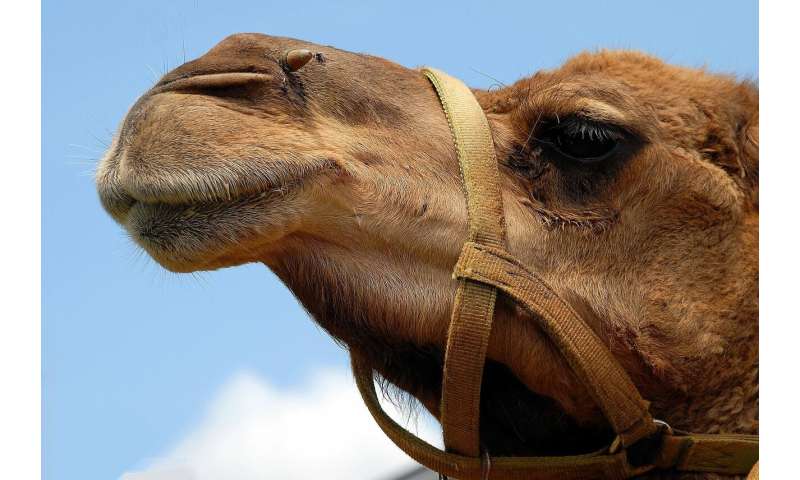#’New’ lactic acid bacteria can make African camel milk safe

“#’New’ lactic acid bacteria can make African camel milk safe”
If you want to watch Movies or TV series visit the Dizi.BuradaBiliyorum.Com

A research project headed by the Technical University of Denmark, DTU, has come up with the formula for a freeze-dried starter culture that African camel milk farmers can use to make safe, fermented milk products.
The majority of the world’s camels are located in East Africa, where they are a common dairy animal. Camel milk constitutes upwards of 9% of the total milk production of Africa. The farmers, who milk the animals, sell much of the milk as a fermented product in local markets or roadside stalls.
The fermentation process occurs spontaneously as the farmers have no cooling facilities. Given that the level of hygiene is often poor, the milk often also contains disease-causing microorganisms such as E.coli and salmonella, which have the opportunity to multiply in the lukewarm milk.
“New” bacteria ferment the milk and increase safety
In a research project, researchers from the National Food Institute, Technical University of Denmark, have managed to find a way of making the milk safer. The research was conducted in partnership with the University of Copenhagen, food ingredient producer Chr. Hansen and Haramaya University in Ethiopia. It was partly funded by Denmark’s development cooperation program, DANIDA.
The researchers have isolated new strains of lactic acid bacteria from raw camel milk, which can be used in a starter culture that both acidifies the milk and kills off even very large amounts of various disease-causing microorganisms in the milk. To the researchers’ knowledge, this is the first time research has shown that these bacteria can be used to make camel milk products safer to consume.
Research relay race
The research in the five-year project was conducted partly with the help of a number of students at both the Technical University of Denmark and Haramaya University, who—over time—have passed on the baton. In total, ten students from the National Food Institute have spent a semester in Ethiopia, including three Bachelor of Engineering in Food Safety and Quality, who have found the formula for a freeze-dried, quality controlled starter culture based on the bacteria.
The trio’s experiments have shown that five liters of milk can make enough starter culture to produce half a million liters of safe, fermented camel milk. However, the researchers responsible for the camel milk project recommend that farmers heat-treat the milk to reduce the amount of disease-causing microorganisms in the milk as much as possible before adding the starter culture.
The three students–Line Kongeskov Frimann, Laura Pontoppidan and Louise Marie Matzen–found it to be an exciting and stimulating challenge to conduct a project of engineering relevance in a cooperation between two such different universities.
Foodborne diseases kill more often in Africa
Countries like Denmark have an effective health system that can quickly help people who are unfortunate enough to get sick from something they eat or drink. However, in Africa, the health care system is less robust. A foodborne illness that causes diarrhea and vomiting can quickly make a patient dehydrated, and without access to medical care, the illness can be fatal.
African researchers estimate that food poisoning kills 137,000 people on the continent annually. For Haramaya University, the project is an important element in the university’s work to develop sustainable solutions and increase food safety in Ethiopia.
The work on isolating the strains from the camel milk is described in further detail in a scientific article in the International Dairy Journal titled “Antimicrobial activity of novel Lactococcus lactis strains against Salmonella Typhimurium DT12, Escherichia coli O157:H7 VT− and Klebsiella pneumoniae in raw and pasteurized camel milk.”
First author Esben Bragason wrote the article during the last semester of his Masters course, while the research laboratories at the DTU were closed down during the spring of 2020—along with much of the rest of Denmark. The article is based on his research, which documents the bacteria strains’ antimicrobial effect.
Esben Bragason et al. Antimicrobial activity of novel Lactococcus lactis strains against Salmonella Typhimurium DT12, Escherichia coli O157:H7 VT− and Klebsiella pneumoniae in raw and pasteurized camel milk, International Dairy Journal (2020). DOI: 10.1016/j.idairyj.2020.104832
Citation:
‘New’ lactic acid bacteria can make African camel milk safe (2020, September 22)
retrieved 22 September 2020
from https://phys.org/news/2020-09-lactic-acid-bacteria-african-camel.html
This document is subject to copyright. Apart from any fair dealing for the purpose of private study or research, no
part may be reproduced without the written permission. The content is provided for information purposes only.
if you want to watch Movies or Tv Shows go to Dizi.BuradaBiliyorum.Com for forums sites go to Forum.BuradaBiliyorum.Com
If you want to read more Like this articles, you can visit our Science category.

